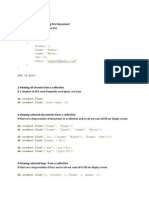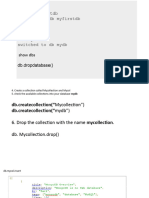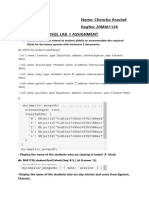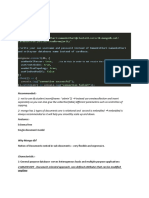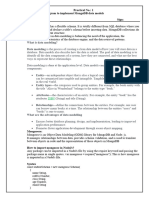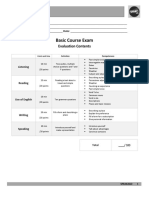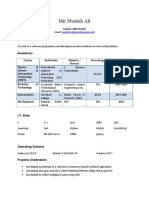0% found this document useful (0 votes)
206 views3 pagesMongoDB Practical Record 1
The document describes experiments involving MongoDB. EXP-1 involves installing MongoDB. EXP-2 involves creating a collection called Hobbies with student fields and inserting sample data, then performing queries on that data. EXP-3 involves creating a Marks collection with student exam data and performing CRUD operations and queries. EXP-4 demonstrates aggregation functions like sort, count, projection, skip and limit. EXP-5 adds null values to documents and performs updates. EXP-6 involves working with arrays in documents, including inserting sample food purchase data with fruit and vegetable arrays and performing related queries.
Uploaded by
Jitendra CvsCopyright
© © All Rights Reserved
We take content rights seriously. If you suspect this is your content, claim it here.
Available Formats
Download as DOCX, PDF, TXT or read online on Scribd
0% found this document useful (0 votes)
206 views3 pagesMongoDB Practical Record 1
The document describes experiments involving MongoDB. EXP-1 involves installing MongoDB. EXP-2 involves creating a collection called Hobbies with student fields and inserting sample data, then performing queries on that data. EXP-3 involves creating a Marks collection with student exam data and performing CRUD operations and queries. EXP-4 demonstrates aggregation functions like sort, count, projection, skip and limit. EXP-5 adds null values to documents and performs updates. EXP-6 involves working with arrays in documents, including inserting sample food purchase data with fruit and vegetable arrays and performing related queries.
Uploaded by
Jitendra CvsCopyright
© © All Rights Reserved
We take content rights seriously. If you suspect this is your content, claim it here.
Available Formats
Download as DOCX, PDF, TXT or read online on Scribd
/ 3























